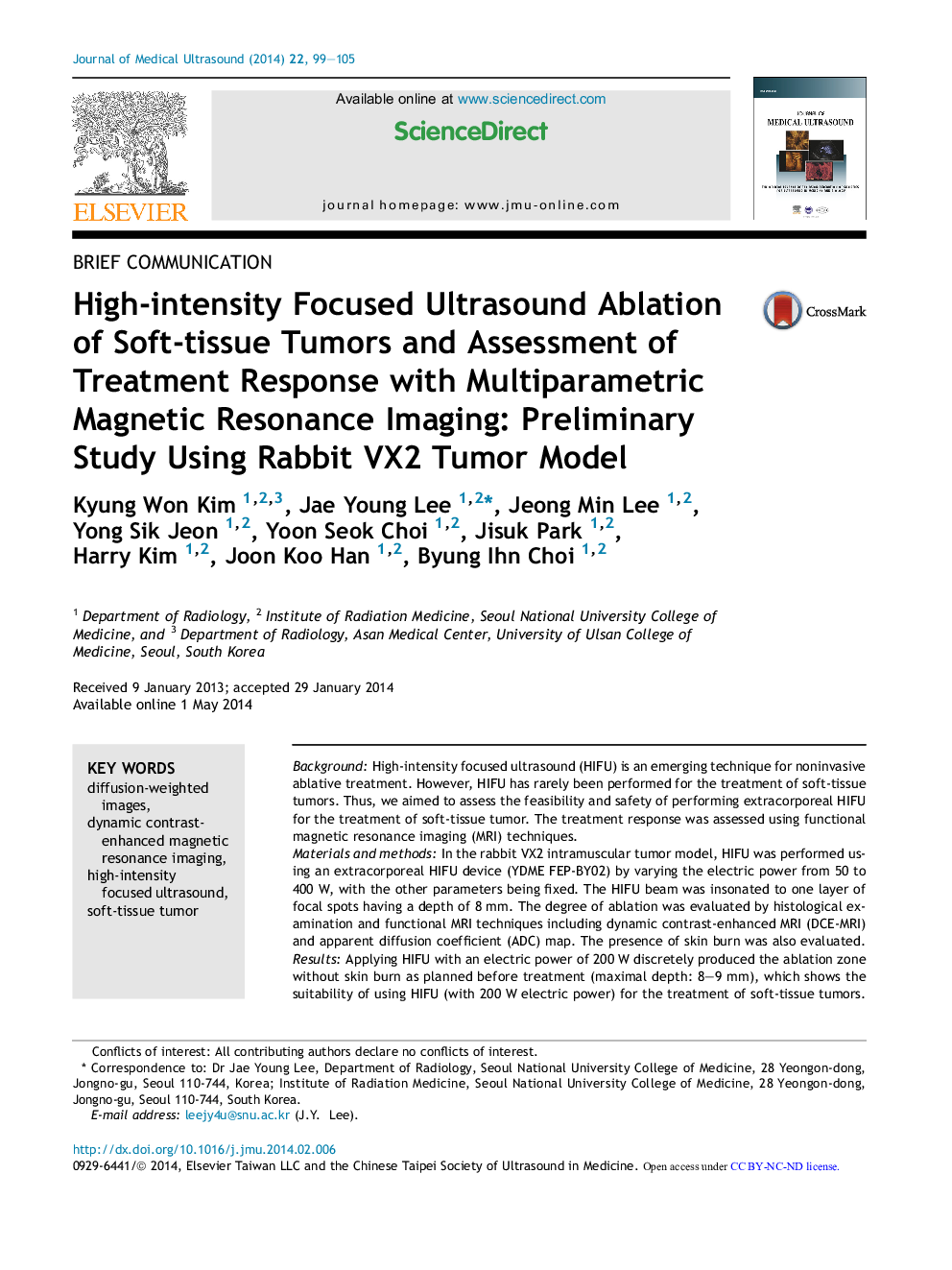| Article ID | Journal | Published Year | Pages | File Type |
|---|---|---|---|---|
| 4233058 | Journal of Medical Ultrasound | 2014 | 7 Pages |
BackgroundHigh-intensity focused ultrasound (HIFU) is an emerging technique for noninvasive ablative treatment. However, HIFU has rarely been performed for the treatment of soft-tissue tumors. Thus, we aimed to assess the feasibility and safety of performing extracorporeal HIFU for the treatment of soft-tissue tumor. The treatment response was assessed using functional magnetic resonance imaging (MRI) techniques.Materials and methodsIn the rabbit VX2 intramuscular tumor model, HIFU was performed using an extracorporeal HIFU device (YDME FEP-BY02) by varying the electric power from 50 to 400 W, with the other parameters being fixed. The HIFU beam was insonated to one layer of focal spots having a depth of 8 mm. The degree of ablation was evaluated by histological examination and functional MRI techniques including dynamic contrast-enhanced MRI (DCE-MRI) and apparent diffusion coefficient (ADC) map. The presence of skin burn was also evaluated.ResultsApplying HIFU with an electric power of 200 W discretely produced the ablation zone without skin burn as planned before treatment (maximal depth: 8–9 mm), which shows the suitability of using HIFU (with 200 W electric power) for the treatment of soft-tissue tumors. By contrast, HIFU with an electric power of 100 W produced an ill-marginated ablation zone with internal residual tumor foci, and HIFU with 300–400 W produced ablation zones with a maximum depth of 13–24 mm, which far exceeded the planned depth and caused skin burn. Perfusion maps of DCE-MRI demonstrated the devascularized ablation zone more conspicuously than conventional contrast-enhanced T1-weighted images, and ADC map demonstrated the surrounding edema or granulation tissue better than conventional T2-weighted images.ConclusionExtracorporeal HIFU treatment for soft-tissue tumor may be a feasible approach with adjustment of input energy level. For post-treatment assessment, functional MRI techniques including DCE-MRI and ADC map may be useful and complementary to conventional MRI.
